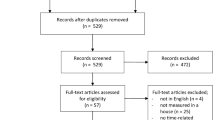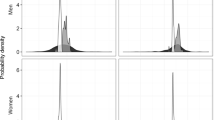Abstract
Numerous epidemiological studies have found associations between ambient particulate matter and adverse health outcomes. The importance of indoor particles has also been recognised since people spend an average of 90% of their time indoors. In order to better understand exposure to particles this study was carried out to provide data on the characteristics of airborne particulate matter found inside homes in the UK. Forty-eight-h measurements were taken at 10 houses during the summer of 1999. Particulate matter with a 50% cut-off efficiency at an aerodynamic diameter of 2.5 µm (PM2.5) and total suspended particulate (TSP) mass concentrations were measured gravimetrically in the kitchen and living room of each home. Concurrent continuous measurements of particle number concentrations over eight different aerodynamic diameter size ranges were made with an optical particle counter. Occupants were asked to complete a time–activity diary and a short questionnaire relating to various housing characteristics for the 48-h period. The volunteers spent approximately 60% of their time at home indoors. The geometric mean concentration of TSP over the 48 h was 32 µg/m3 in the kitchen and 41 µg/m3 in the living room. The geometric mean concentration of PM2.5 was 13 µg/m3 in the kitchen (integrated over the entire 48-h period) and 12 µg/m3 in the living room (integrated over the time the volunteer was present in the house) with a range of 5 to 77 µg/m3. The continuous measurements showed large variability over the day as a result of activities such as cooking and smoking and the patterns were similar in the kitchen and the living room. A good correlation of both mass and mean number concentration between rooms indicated a high degree of spatial uniformity.
This is a preview of subscription content, access via your institution
Access options
Subscribe to this journal
Receive 6 print issues and online access
$259.00 per year
only $43.17 per issue
Buy this article
- Purchase on Springer Link
- Instant access to full article PDF
Prices may be subject to local taxes which are calculated during checkout
Similar content being viewed by others
Author information
Authors and Affiliations
Corresponding author
Rights and permissions
About this article
Cite this article
WIGZELL, E., KENDALL, M. & NIEUWENHUIJSEN, M. The spatial and temporal variation of particulate matter within the home. J Expo Sci Environ Epidemiol 10, 307–314 (2000). https://doi.org/10.1038/sj.jea.7500091
Received:
Accepted:
Published:
Issue Date:
DOI: https://doi.org/10.1038/sj.jea.7500091
Keywords
This article is cited by
-
Exposure to fine particulate matter (PM2.5) from non-tobacco sources in homes within high-income countries: a systematic review
Air Quality, Atmosphere & Health (2023)
-
The state of indoor air quality in Pakistan—a review
Environmental Science and Pollution Research (2010)
-
Personal exposure to particulate matter less than 2.5 μm in Mexico City: a pilot study
Journal of Exposure Science & Environmental Epidemiology (2004)
-
Photometrically measured continuous personal PM2.5 exposure: Levels and correlation to a gravimetric method
Journal of Exposure Science & Environmental Epidemiology (2002)



